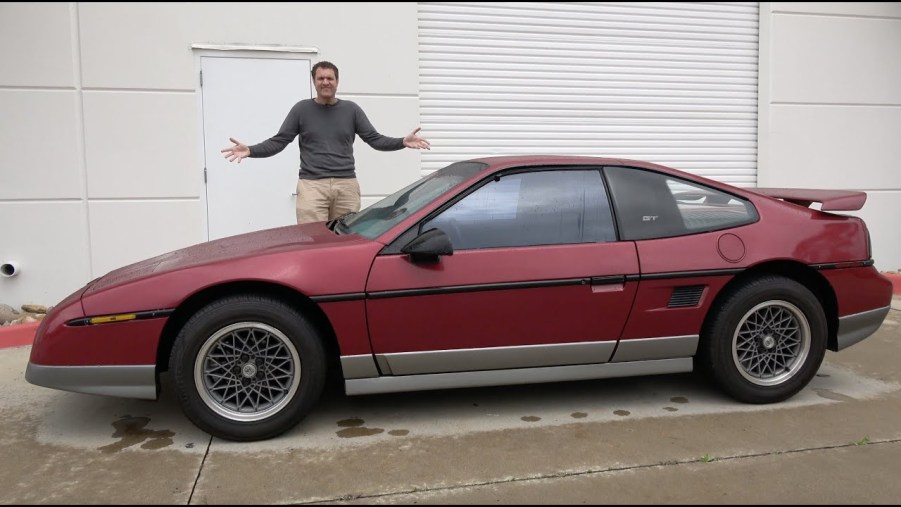
The Pontiac Fiero and Toyota MR2 Rivalry
In the early 1980s, the United States automotive industry had just come out of two oil embargos and also had new smog controls enacted by the government. Consequently, horsepower numbers dropped, and consumers were gravitating toward smaller vehicles that consumed less fuel. Enter the Pontiac Fiero and Toyota MR2. These two small cars would battle it out for sportiness in smaller and more fuel-efficient, mid-engined packages.
Pontiac Needed Something Different
In an interview with the New York Times in May 1981, William E. Hoglund, then General Manager of Pontiac said,
”We’ve gone through an agonizing self-appraisal here, and we’ve concluded that we have to create a sense of excitement by defining performance in contemporary terms,” he said. ”It’s not just acceleration anymore, it’s ride, handling, styling flair, and technical sophistication.” Selling Enthusiasm”

Pontiac Fiero Introduction
That’s where the Pontiac Fiero came in. It was sporty, wedge-shaped, mid-engined, had fiberglass panels for the body over a space frame, a two-seater with pop-up headlights, and was smaller than the Corvette. Furthermore, it was powered by a four-cylinder and promised great mileage. It was introduced in 1983 as a 1984 model year vehicle, and it brought the excitement that Pontiac was so desperately seeking.

Toyota MR2 Introduction
In late 1984, Toyota introduced the MR2 as a 1985 model year. It was also a sporty, wedge-shaped, mid-engined, two-seater, with an option for T-tops, and had pop-up headlights. It was a very similar recipe to the Fiero. However, the execution was with Toyota’s quality.
The Fiero and MR2 both had a flavor of exoticness with their designs. The aggressive wedge-shaped vehicles with pop-up headlights spoke of Italian alternatives that had higher price points. Consumers loved them for it and bought many copies. So, it became a rivalry between the two manufacturers of who can do the mid-engine two-seater better.
Updates
In 1988, Pontiac updated the Fiero’s suspension, brakes, and steering. It also added a V6 power plant. In the same model year, Toyota added a supercharger to the MR2 in the United States (it already had it overseas). In fact, it seemed that whenever one manufacturer would do an update, the other manufacturer would also have updates for their vehicle. Road and Track and Motorweek would even place the two in side-by-side comparisons.
The Fiero would cease production after the 1988 model year after sales dropped precipitously. The MR2, however, would continue it’s run through three generational iterations in total. Those generations would see different engine options and improvements of the vehicle along the way. Ultimately though, the MR2 would reign as king of the sporty, affordable mid-engined cars up through its final year of production in 2007.

Statistics
Production numbers according to Mark Corbin in the Fiero Spotters Guide
- 370,168 Pontiac Fiero units were sold in its five model years of production.
- 163,000 Toyota MR2 units were sold in the first five years of its production.
Engine
Pontiac Fiero:
- 4 cylinder / 2.5-liter with 92 horsepower
- 6 cylinder / 2.8-liter with 140 horsepower
Toyota MR2:
- 4 cylinder / 1.6-liter with 124 horsepower
- 4 cylinder supercharged / 1.6-liter with 145 horsepower
- 4 cylinder / 2.2-liter with 130 horsepower
- 4 cylinder turbo / 2.0-liter with 200 horsepower
- 4 cylinder / 1.8-liter with 138 horsepower
Zero – 60 mph times according to accelerationtimes.com
- Pontiac Fiero with entry 4 cylinder motivation: 8.2 seconds
- Toyota MR2 with entry 4 cylinder motivation: 8.2 seconds
First Year Base Price


